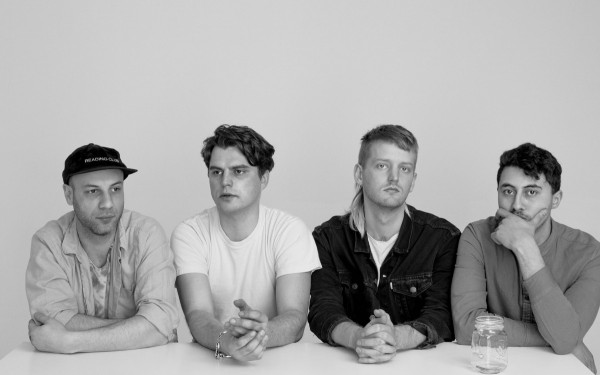Seoul C’est Loin: Jules Tomi Brings His Inspiration to Montreal
From cinema, to K-pop, to fashion—South Korea is a cultural hot-bed at the moment. Yet, rarely is it that we get to see beyond the glamour and buzz.
In his first photo exhibition, Seoul C’est Loin, photographer and McGill University sociology student Jules Tomi reminds us that Korea is a complex country with cultural depth. He invites viewers to take a closer look at the modernity of this progressive country.
At the Glass Door Gallery on St. Laurent Blvd., are works of Tomi’s. They depict moments of everyday life in Korea, from images of city landscapes, torn down buildings, to new developments and still-life of civilians on the streets. The photos he captured during his two-month trip to Korea last summer come across as honest, smart and intimate.
Tomi’s photographs not only lend themselves to the moment they capture, but bring an emotional impact to the viewer from the moment they stand in front of the image. While some shots are seemingly mundane, other are captivating and intriguing.
Of the exhibition, Tomi wrote that he wanted to “adopt the gaze of a random bystander” and “capture scenes from an ordinary modernity.”
There is a melancholic feeling that accompanies Tomi’s photographs. The pictures, taken during aimless walks throughout the streets of Korea, showcase the everyday occurrences in the lives of the country’s inhabitants.
Interestingly, the images don’t come from a place of sheer curiosity, but rather were chosen to tell a story—to give an idea of what life in Korea is like. Tomi spent close to five years studying the Korean language and culture. Through his studies, Tomi said, he was able to gain a deeper understanding of the country.
“I guess I owe it to my intellectual background on Korea—I studied Korean issues sociologically and anthropologically.”
He referred to a photograph of an older lady peeling garlics on the street, “For instance, the lady peeling garlic in the street, I know that the reason why so many old ladies sell vegetables on the street has to do with the fact that there’s a lot of old age poverty in South Korea. That old age poverty is caused by certain social phenomenons that I’m also aware of and therefore I can make the connections.”
Tomi admitted without his prior knowledge of the certain social standards and phenomenons in Korea, perhaps some of the photographs would just be passing moments.
The McGill student first became interested in Korea through cinematic mediums.
“The movies drew my interest towards more social and political issues,” he explained. He was mostly intrigued by the fact that Korean cinema did not strive for the typical Hollywood happy endings. “In Korean cinema, that rarely happens, usually everyone dies—it’s very tragic. I found that really refreshing compared to Western tropes of cinema.”
His interests piqued when he took language and culture courses on Korea in university.
“Everything changes so fast,” Tomi said, adding that there was a certain “dizziness” to how fast-paced everything felt.
According to Tomi, South Korea is one of the fastest developing countries and has been on a modernization high since 1945.
Even though the government has become increasingly aware of the pressures and stress that face many Korean citizens, work hours for the average citizen are still insanely long—ranging from 12-16 hours a day. Still, Koreans continue to push for more public holidays and more leisure time.
“I feel like when we usually hear about Korea in Western countries, it’s always K-pop and dramas. It’s that very glorified image of the country. Whereas, it’s like any country, you know there are good things, bad things, there’re problems and there are solutions. I feel like I offer a perspective that you don’t see very often. That’s why it mattered to me to set up this exhibition,” Tomi explained.
“More than half of the people who came throughout the first [opening] night, I didn’t know. So that’s surprising, ‘cause you know, it makes sense that your friends and family come, but when it’s mostly strangers, it feels even better. It means that you managed to reach people you don’t know,” Tomi said with excitement.
On his official website, Tomi describes himself as being a social photographer. He said that, while the term may not be suitable to describe him anymore, his goals for his pictures were to convey symbols that were his understandings of certain things.
Seoul C’est Loin was a triumphant effort in showcasing the duality of modernity in South Korea, as well as capturing the ‘post-industrial melancholy’.

4_820_546_90.jpg)
3_820_546_90.jpg)
1_820_546_90.jpg)
2_820_546_90.jpg)
_600_832_s.png)




